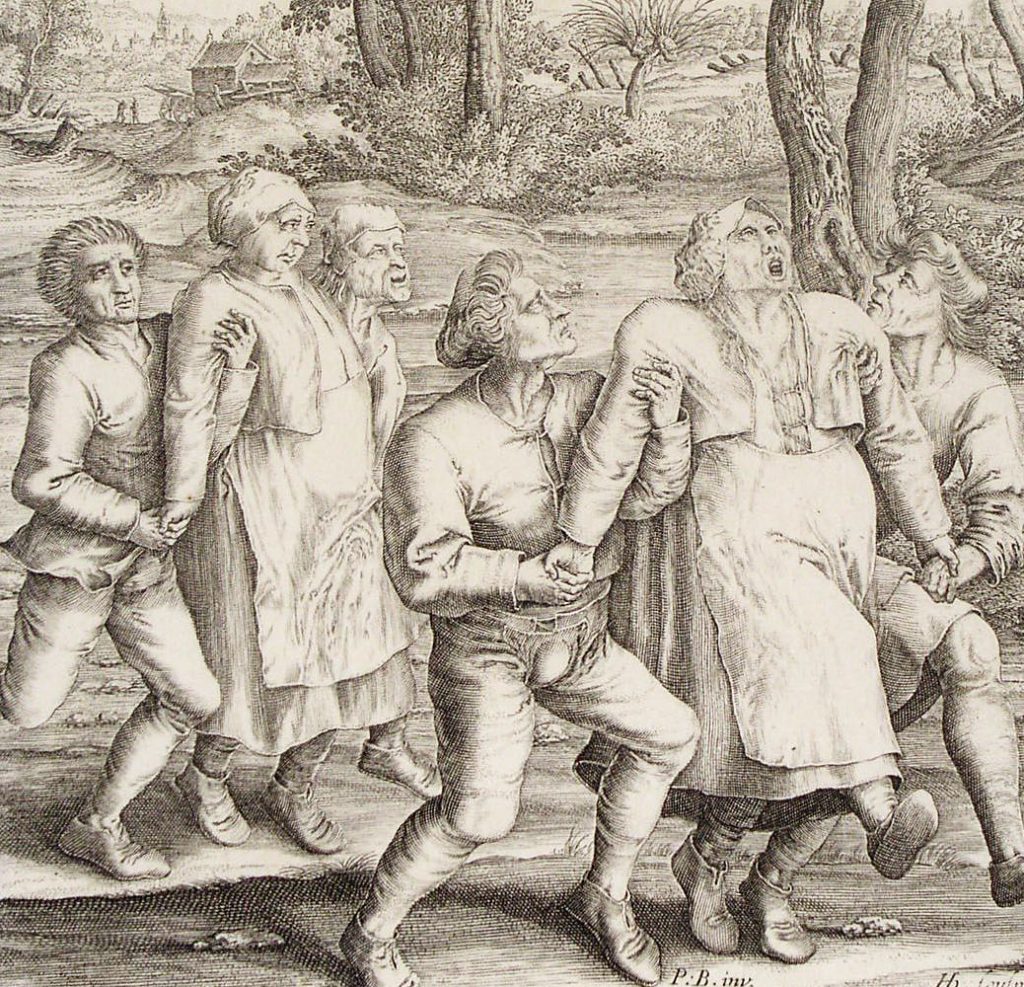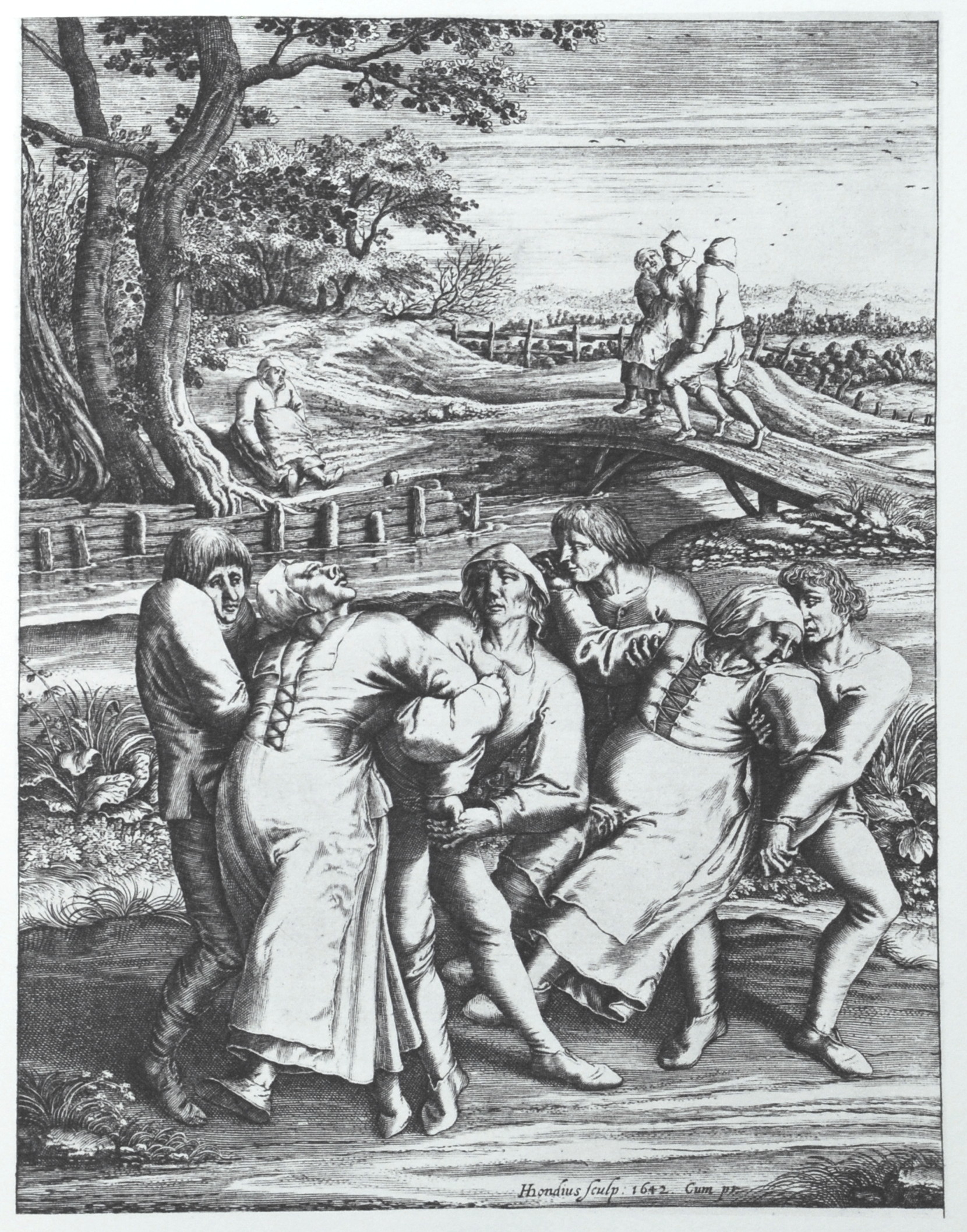In the sweltering summer of 1518, the streets of Strasbourg witnessed one of history’s most peculiar and terrifying events. A woman named Frau Troffea began dancing feverishly in the middle of the street. What started as one person’s inexplicable behavior soon turned into a devastating epidemic that would plague the city for over a month.
Within days, dozens of people joined this mysterious dancing frenzy. The dancers moved without rest, their feet bleeding and bodies exhausted, yet they couldn’t stop. Local physicians watched helplessly as the number of dancers grew to hundreds. Many collapsed from sheer exhaustion, while others succumbed to heart attacks and strokes.

Image credit: Dancing Plague of 1518
The authorities response to this bizarre situation was perhaps even more shocking. Rather than trying to stop the dancing, they encouraged it! They built wooden stages and hired musicians, believing the afflicted must dance out their madness. This decision tragically led to more deaths as exhausted dancers continued their involuntary performance.
Modern scientists have proposed various theories to explain this bizarre event. Some suggest ergot poisoning, a fungus found in rye bread that causes hallucinations. Others point to mass hysteria, a phenomenon where large groups of people experience physical symptoms with no clear medical cause. The true reason remains a mystery to this day.

Image credit: The Dancing Plague of 1518
Mass hysteria events throughout history share striking similarities with the Dancing Plague. In India, cultural beliefs about nail-cutting at night persist across generations. Russian folklore warns against passing empty bottles across tables. These beliefs, while seemingly irrational, demonstrate how mass behaviors can grip entire communities.
The power of mass behavior appears in other historical events too. Consider the Titanic tragedy, where multiple ice warnings went unheeded due to collective overconfidence. Australia’s Great Emu War of 1932 shows how entire communities can mobilize against unusual threats, even if their responses seem absurd in hindsight.
The Dancing Plague of 1518 stands as a testament to the mysterious ways human minds and bodies can react under extreme social pressure. While we may never fully understand what drove hundreds of people to dance until death, this event reminds us that mass behavior can manifest in unexpected and sometimes deadly ways.
The legacy of this bizarre episode lives on in modern studies of mass hysteria and social psychology. It serves as a fascinating example of how shared beliefs and behaviors can spread through communities, creating phenomena that challenge our understanding of human nature and social dynamics.
References:
Dancing Plague of 1518 – Wikipedia – link
What Was the Dancing Plague of 1518? – History – link
The Dancing Plague of 1518 – Public Domain Review – link
Categories: Do you know, Historical Mysteries, Mass Hysteria, Medieval History, Unexplained Phenomena
Tags: 1518, Dancing Plague, Historical Events, Mass Hysteria, Medieval History, social psychology, Strasbourg, unexplained phenomena
Religion: Various
Country of Origin: Australia, France, India, Russia, United Kingdom
Topic: Mass Hysteria
Ethnicity: European


